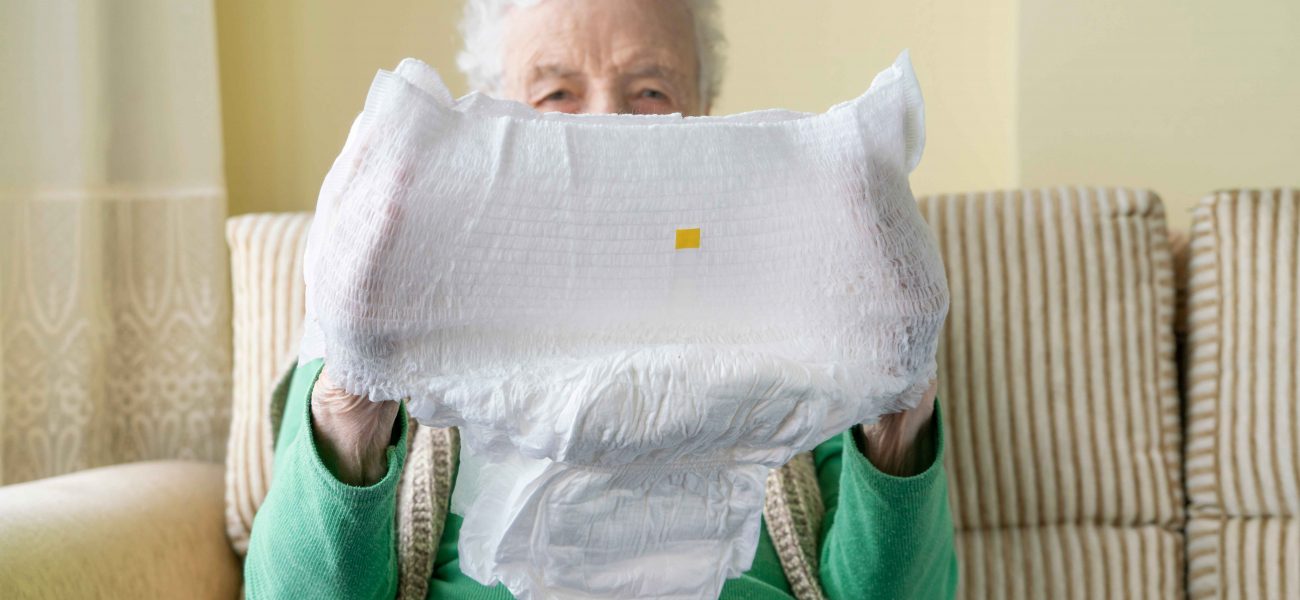Selecting the Right Diaper Size: Do Extra Large Adult Diapers Absorb More Than Other Sizes?
Adult Diapers are one of the most extensively used products by both men and women that are prone to Urinary Incontinence issues because of several health reasons. Some of the medical reasons could be mobility impairment, dementia, diarrhea, or injuries and accidents. These diapers have a powerful absorbent core that have a high retaining capacity which is an ideal choice for overnight protection and travelling.
Selecting the right diaper size is crucial for the comfort and confidence of anyone who requires them. Whether you are an adult experiencing incontinence or a caregiver for someone who does, choosing the right size and absorbency is essential. With so many different sizes and types of adult diapers available in the market, it’s easy to feel overwhelmed and unsure about what to look for when selecting the right product.
One common question that people have is, “Whether extra-large adult diapers absorb more than other sizes”?
While it’s true that extra-large diapers are designed to hold more liquid, the size of the diaper is not the only factor that determines its absorption capacity. In this blog post, we will explore the factors determining a diaper’s absorbency and provide tips on selecting the right size for your needs.
Factors that determine absorbency
The absorbency of a diaper depends on several factors, including the type of material used, the design of the diaper, and the level of incontinence.
Here are some key factors to consider when selecting a diaper based on absorbency:
1. Material:
The material used in the diaper can significantly impact its absorbency. Many diapers are made with superabsorbent polymers (SAPs), which are designed to absorb large quantities of liquid quickly. The type of SAP used, the amount of SAP in the diaper, and the overall quality of the material can all impact absorbency.
2. Design:
The diaper’s design can also affect its absorbency. A diaper with a higher surface area can absorb more liquid than one with a smaller surface area. Additionally, a well-designed diaper will have features such as leak guards and leg cuffs that help to prevent leaks.
3. Incontinence level:
The level of Urinary Incontinence also plays a significant role in determining the right diaper. A properly fitting diaper is necessary to prevent leaks and ensure maximum absorbency. For someone experiencing heavy incontinence, Extra-Absorb Pants by Lifree would be a good fit. However, for light incontinence, Comfort Standard Pants by Lifree may suffice.
Selecting the right diaper size
When selecting the right diaper size, it’s essential to consider the waist and hip measurements of the person who will be wearing the diaper.
Here are some tips on selecting the right diaper size:
1. Measure waist and hip circumference:
Use a tape measure to measure the waist and hip circumference of the person who will be wearing the diaper. Many manufacturers provide size charts that indicate the appropriate size based on these measurements.
2. Check fit:
When trying on a new diaper, ensure it fits snugly but is not too tight. The diaper should be comfortable to wear and should not cause any chafing or irritation.
3. Test absorbency:
Test the absorbency of the diaper by pouring water onto it and observe how quickly it absorbs the water. If the diaper is not absorbing liquid quickly enough, you may need to try a different size or brand.
4. Consult with a healthcare professional:
If you are unsure about which size or absorbency level to select, consult with a healthcare professional or a knowledgeable sales representative who can provide guidance based on the individual’s needs.
By following these tips, you can select the right one for you or the person you’re taking care of. And even when you couldn’t, ultimately, the best way to determine the right diaper size and absorbency capacity is to consult a healthcare professional or a knowledgeable sales representative who can provide guidance based on the individual’s needs.
FAQ’s
2. How do I choose the right adult diaper size?
Choosing the right adult diaper size involves measuring the waist and hip accurately to determine which size will provide the best fit. A good diaper should fit snugly without being too tight, preventing leaks while also ensuring comfort. Manufacturers usually provide sizing charts on their packaging, making it easier to pick the correct size based on your measurements. Avoid selecting a diaper that’s too big, thinking it will absorb more, as this can cause leaks due to poor fitting. On the other hand, a diaper that’s too small may feel uncomfortable and fail to provide full coverage. Always try a single pack first to check comfort and performance before committing to a larger quantity. The right size ensures proper absorbency, reduced risk of leakage, and a more secure, confident experience.
3. Does a larger diaper size mean better protection?
Not necessarily. While larger diapers cover more surface area, they don’t always provide better protection. The level of protection comes from the absorbent core, which determines how much liquid the diaper can hold. Using a larger size than needed may actually reduce protection because the diaper won’t fit properly, leading to gaps and leaks. Instead of going for a bigger size, choose a diaper that fits well and matches your absorbency needs. Many brands offer products in various absorbency levels for each size, such as light, moderate, or heavy-duty protection. Proper fit is key to preventing leaks and ensuring comfort. If you need more absorbency, look for diapers labeled as “super absorbent” or “overnight,” regardless of size. A good fit combined with the right absorbency level will provide the best results.
4. What happens if I wear a diaper that is too big or small?
Wearing the wrong diaper size can cause several problems. If the diaper is too big, it won’t sit properly on the body, leading to leaks, discomfort, and even skin irritation from friction. It may also cause the diaper to shift or sag when you move, making it less effective. On the other hand, if the diaper is too small, it can feel tight, cause redness or pressure marks, and fail to provide full coverage. This increases the risk of leaks and discomfort. A poorly fitted diaper also reduces confidence during daily activities. To avoid these issues, always measure your waist and hip before buying and follow the sizing guide on the product. Properly fitted diapers ensure maximum absorbency, prevent leaks, and provide all-day comfort for active or resting individuals.
5. How do I know if my diaper size is correct?
You can tell if your diaper size is correct by checking for a snug, comfortable fit without gaps or tightness. A correctly fitted diaper should stay in place even when you walk, sit, or lie down. There should be no red marks on the skin after wearing, and the diaper should not feel overly loose or saggy. Additionally, the waistband and leg openings should create a secure seal to prevent leaks. If you experience frequent leakage despite the diaper being dry in some areas, it may be a sign of the wrong size. Brands usually provide detailed sizing charts, so compare your waist and hip measurements before purchasing. You can also try different brands to find one that fits your body shape better. A proper fit improves both comfort and effectiveness.
6. Are extra-large adult diapers good for overnight use?
Extra-large adult diapers can be suitable for overnight use, but size alone doesn’t guarantee night-long protection. Overnight diapers are specifically designed with enhanced absorbency to handle longer usage times, reducing the need for frequent changes during sleep. If you need overnight protection, look for diapers labeled as “overnight” or “extra absorbent” in your size, whether that’s medium, large, or extra-large. The key is to combine the right size with the right absorbency level. A diaper that’s too big may leak due to poor fit, even if it’s extra absorbent. For the best results, select a product that matches your body size and offers overnight protection features like leak guards, extra absorbent cores, and soft, breathable material for skin comfort. This combination ensures undisturbed sleep and effective leakage prevention.
7. How often should I change extra-large adult diapers?
The frequency of changing an extra-large adult diaper depends on its absorbency level, your fluid intake, and how much you move during the day. On average, adult diapers should be changed every 4–6 hours to maintain hygiene and prevent skin irritation. Overnight diapers may last longer due to their high absorbency, but they should still be changed first thing in the morning. Even if the diaper doesn’t feel completely wet, it’s good practice to change it regularly to keep the skin clean and healthy. Using barrier creams or wipes during changes can also help prevent irritation. Don’t wait until the diaper feels overly heavy, as this may lead to leaks or skin problems. Whether using small, medium, or extra-large sizes, regular changes ensure comfort, freshness, and better skin care.
8. Are extra-large adult diapers suitable for active people?
Yes, extra-large adult diapers can be suitable for active people if they fit properly and provide a secure hold. Active individuals should look for diapers with features like flexible waistbands, snug leg cuffs, and leak guards to ensure the diaper stays in place during movement. Pant-style adult diapers are often a preferred choice for active users, as they resemble regular underwear and are easy to put on or remove. Properly fitted diapers allow you to walk, exercise lightly, or engage in daily tasks without worrying about leaks or discomfort. Always check for breathable material to avoid skin issues caused by sweating. Choosing a product specifically designed for mobility ensures comfort and reliability, whether you are going out, traveling, or engaging in light physical activities throughout the day.
9. What features should I look for in extra-large adult diapers?
When choosing extra-large adult diapers, look for key features that ensure comfort and protection. These include high absorbency levels, breathable materials, leak guards, and a snug yet flexible waistband. Elastic leg cuffs help prevent side leaks, while soft inner layers keep the skin dry and comfortable. For individuals with sensitive skin, hypoallergenic materials are ideal. If you need a diaper for long hours or overnight use, choose one labeled as “super absorbent” or “overnight.” For active users, pant-style diapers provide better mobility and ease of wearing. Check sizing charts to ensure a proper fit, as even an extra-large diaper must match your waist and hip measurements. Paying attention to these features helps you find a product that meets your needs, offering both comfort and reliable leak protection.
10. Should I choose pant-style or tape-style extra-large diapers?
The choice between pant-style and tape-style extra-large diapers depends on your lifestyle and level of mobility. Pant-style diapers are worn like regular underwear and are great for active individuals who can change them independently. They are easy to pull up or down and provide a discreet, comfortable fit for daily use. On the other hand, tape-style diapers are better for those who need assistance with changing or spend more time resting. They can be adjusted for a more customized fit and are often used in caregiving situations. Both types are available in extra-large sizes, so it comes down to convenience and personal preference. Consider your routine, level of movement, and comfort when deciding between the two. In some cases, using both types for different situations works best.






















